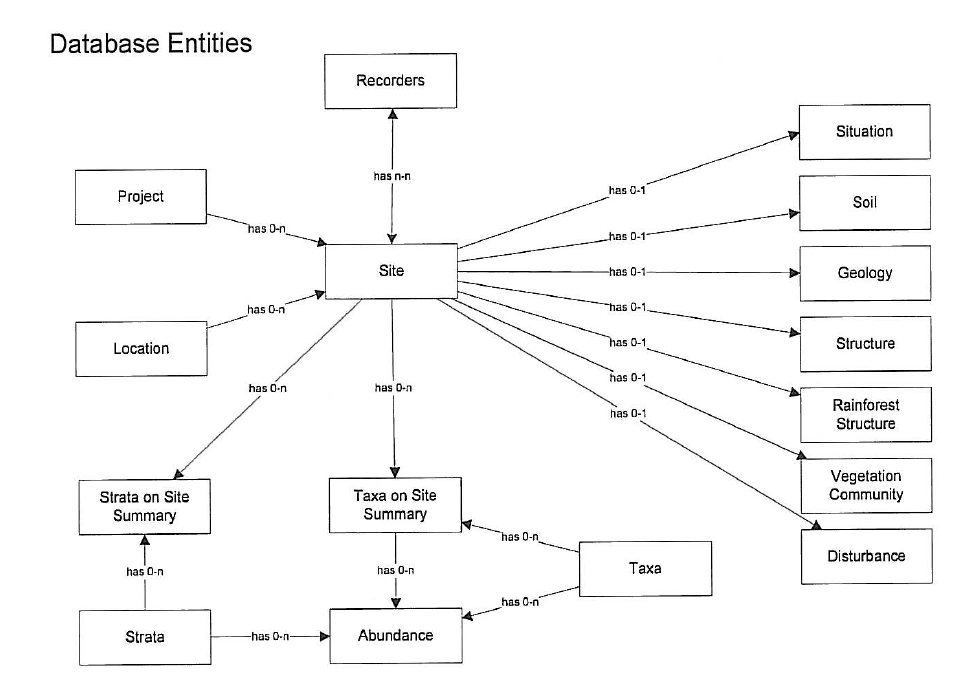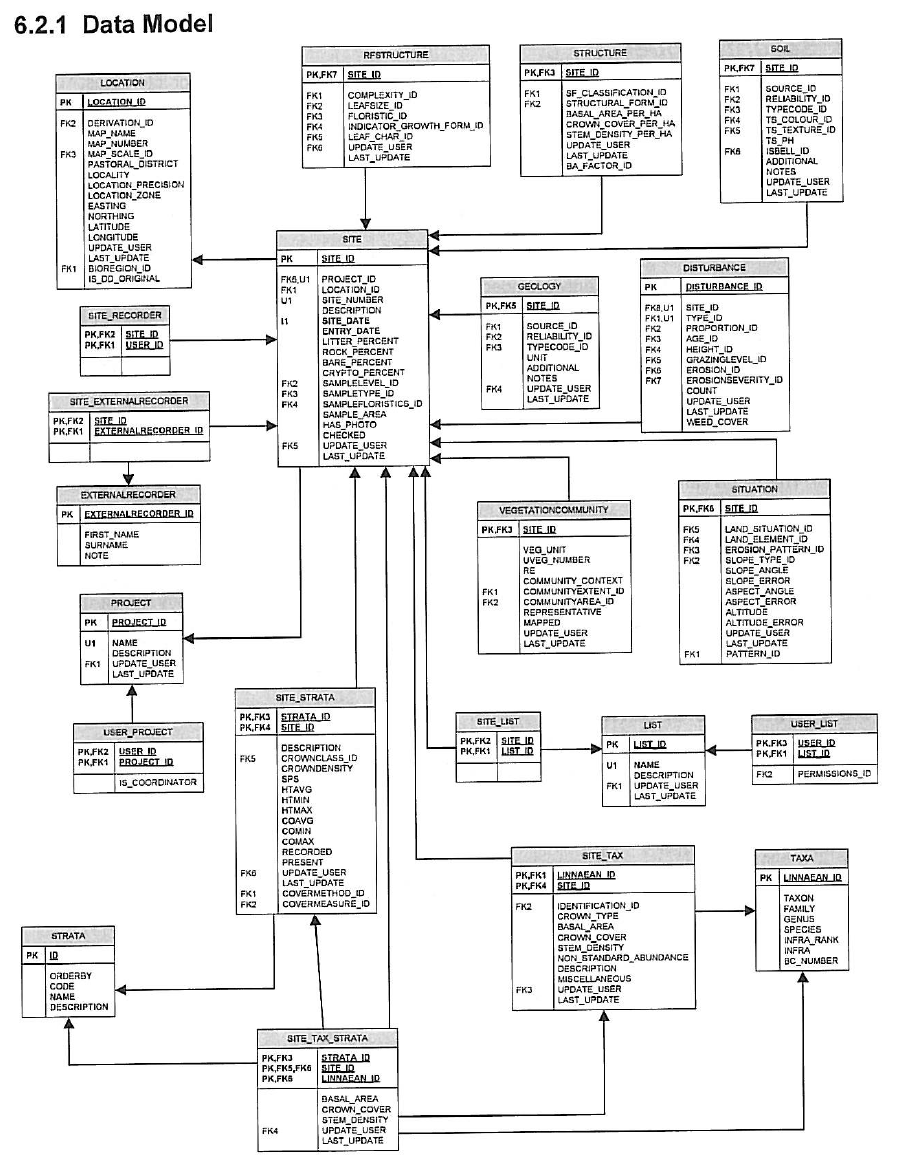This alignment relates the (Queensland) CORVEG logical model to the O&M conceptual model.
CORVEG reports a large set of observations of different properties of a site. The total number of potentially observed properties is large. The description of the site itself is grouped into thematic groups named Geology, Disturbance, Situation etc. The description of the vegetation is organized by strata. The description of the taxa at a site is generally organized by taxon, and also by strata.
Principles of alignment of CORVEG to O&M
Following the standard observation model:
every 'value' is recorded as the
hasResultof an Observationevery
Observationis related to a FeatureOfInterestin the context of TERN Plot Ontology this is usually a Site, or a Site Strata Table, or a Site Tax Table, or an OrganismOccurrence.
the type of value is recorded as the Observation's
observedProperty. It is taken from a controlled-vocabulary of observable propertiesObservations may be grouped in an ObservationCollection which is a set of observations with (usually) a common
hasFeatureOfInterestandphenomenonTimeeach individual
Observationis nested as assn-ext:hasMemberof theObservationCollection
The templates on the TERN Plot Ontology description illustrate the application pattern.
Action Items
- Edmond Chuc (Unlicensed) Link FeatureOfInterest and TERN Plot Ontology description to the new page about the description of the Plot Ontology and the Data Ontology.

